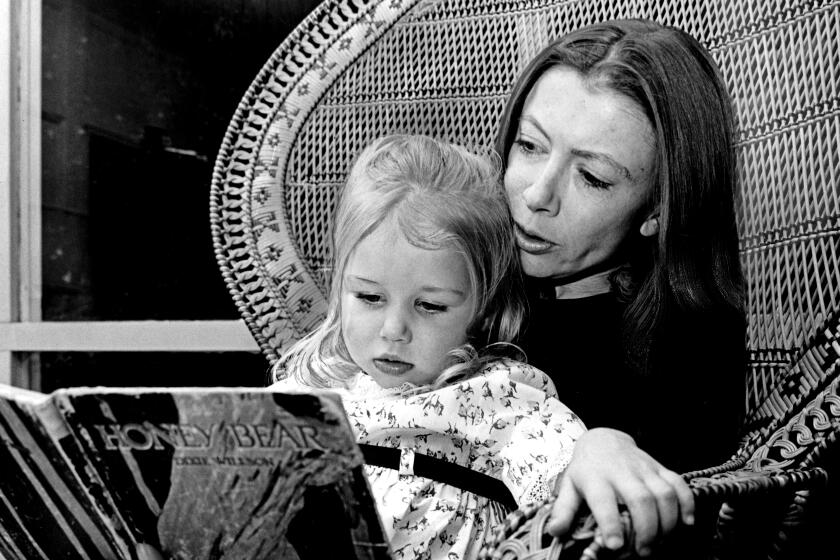Take Two
- Share via
A new translation of Kafka is always an event. No author of the 20th century has had such an extensive and profound influence. He changed literary thought, laid bare the interior of the soul that had lain in darkness for generations, and surprisingly, he showed that modern man’s longings for the metaphysical had not faded, even in a period when it appeared that religious faith had died out.
Kafka’s name will always be connected with that of his friend Max Brod. Having published only essays and short stories, such as “The Metamorphosis” (1915), in his lifetime, Kafka, as we know, ordered his friend to destroy all of his manuscripts, indeed, the majority of his work, after his death in 1924 at the age of 41. This last will and testament was unequivocal and placed Brod in a grave moral dilemma: Should he obey the will or violate it? Brod violated it and published Kafka’s work, even his journal. This was not an easy decision for him. In the afterword to “The Trial,” Brod declared:
“My decision rests simply and solely on the fact that Kafka’s unpublished work contains the most wonderful treasures, and, measured against his own work, the best things he has written.”
In 1925, Brod published “The Trial,” and in 1926, he published “The Castle.” Like “The Trial” and “Amerika” (1927), “The Castle” was not finished by its author, though it does not leave the reader with an impression of being fragmentary. As with every great work, you feel the power of its meaning in every sentence. The content of a chapter is often a miniature of the entire work. Like Greek and Roman sculptures whose arms and legs have been broken off, there is also a certain kind of completeness in Kafka’s truncated works.
What does “The Castle” deal with? It is perhaps the most secretive of Kafka’s works, and it is no wonder that so many commentaries about it have been written. Sometimes one has the feeling that one should read Kafka the way one listens to Bach, without excessive intervention of analytic thought. Nevertheless, thought makes its own demands, and we cannot ignore it.
Kafka’s oeuvre deals with the secret nature of life, but that secret has many faces. Sometimes, as in “The Trial,” it has the aspect of a violent bureaucratic maze that draws the hero into dark corners where guilt, prosecutors, defense attorneys, court officials and clerks reign, along with other phantoms connected to the judicial process. At other times it is not a maze, but rather a kind of longing, the attraction toward something beyond what is visible to the eye, to the infinite.
As in “The Trial,” an atmosphere of secrecy prevails in “The Castle,” but it is fiercer. Labyrinths and bureaucratic tangles are not lacking, but here the hero, K., sometimes stops in a kind of amazement, as though he has become enchanted by the illusions that surround him. Brod interpreted this amazement as divine grace.
In “The Trial,” K. is persecuted by the bureaucratic authorities of darkness. In “The Castle” he is only rejected and remains outside the great mystery, merely guessing and trying to understand. As I have noted, many interpretations have been offered for “The Castle.” Some are theological, but most of them are existential. However, Kafka’s great power is in the factual atmosphere he creates. His mystery always grasps an object, the gesture of a hand, or the landscape that surrounds people. The music of his sentences is not meant to shock, but rather it proceeds from fact to fact. Kafka is the master of correct detail.
Women play an important role in “The Castle.” Sometimes it seems to the hero that women are the right connection to the realm of mystery, but sometimes it seems that they induce him to sin and dissoluteness. K. tries everything, even if it is of little, partial or deceptive use, in order to penetrate the castle. It must be assumed that had the novel been finished by its author, K. would not have entered the castle.
Brod published “The Castle” in 1926, declaring: “At that time my aim was to present in accessible form an unconventional, disturbing work which had not been quite finished; thus every effort was made to avoid everything that might have emphasized its fragmentary state!” In order to achieve this goal, Brod suppressed parts of the work, and here and there he modified it. Perhaps this made life easier for the average reader, but it was a sin against Kafka’s work. In 1935, the second edition was published by Schocken in Berlin, and in this edition, most of the suppressed passages were restored. However, in 1935 Hitler already ruled Germany, and Jewish writers were permitted to publish only with Jewish publishing houses, and only for Jews. Kafka’s works, like those of all Jews, were declared undesirable and confiscated. Thus Kafka’s works were ignored for a while.
They became known to the world through the English translations by Willa and Edwin Muir, which were made from the first incomplete edition. The nearly complete text appeared in English, published by Schocken in New York in 1946, and in 1982 a critical edition of “The Castle” appeared. The present translation by Marc Harman is an additional effort to bring Kafka’s works nearer to the source with respect to spelling, punctuation, the division into chapters and the fragmentary feeling. Brod, with the best of intentions, tried to improve the text, but that improvement deprived the fragmentary quality of its power.
The new translation, with respect to its vocabulary and tempo, brings Kafka closer to the source. The transparent factuality, the precision, and the musicality of the sentences all come through well. The Muir translation, perhaps under Brod’s influence, tended to use high and formal words that emphasized the religious element of the work.
To read Kafka is always a surprising encounter. It shocks literary conventions and takes you with a jolt to the depths of the soul. Kafka’s writing is daring in its expression but not experimental. It is like the prose of the Bible: factual, to the point, without ornament and without too many adjectives. Kafka relates seriously to people’s pain and nightmares, with respect and without any sentimentality, but also without cynicism. It is no coincidence that Brod found deep religious longings in “The Castle.” The new translation by Harman restores Kafka to Kafka.
More to Read
Sign up for our Book Club newsletter
Get the latest news, events and more from the Los Angeles Times Book Club, and help us get L.A. reading and talking.
You may occasionally receive promotional content from the Los Angeles Times.










